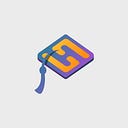TL;DR: At the bleeding edges of our society, education, art, and social justice merge into one experience of navigating change. Familiarity with that experience is key our success.
My grandparents’ generation would, upon hearing something novel, ask “is it good for the Jews of bad for the Jews?” It was their way to boil down analysis to a simple “thumbs up” or “thumbs down” conclusion. In my family, we sardonically continue to ask that same question when we hear of complex developments. We are really asking, “is this good for humanity, or bad for humanity?”
The #1 question I am asked of late is “What do you think of AI?” My book Education in the Digital Age: How We Get There (published in April of 2020) was all about transforming our schools to prepare society for a period of rapid change. And yet, I had no idea what was about to happen. First, the pandemic expanded the Overton Window regarding our adoption of new technology and more recently Chat GPT exploded on the scene.
Technological change has thus accelerated from Moore’s Law (doubling every year or 2X) to something like Reed’s Law (exponential annual growth or 2ˣ). For example, Auto GPT was conceived just two weeks before it was built and released, transforming how many young businesses complete daily tasks.
Exponential Age technology is just too fast to keep up with. The influencers of yesterday who spent hours writing newsletters or producing videos are being replaced by teenagers who produce content in seconds by simply knowing how to prompt an AI tool effectively. Even those at the epicenter of AI tech are feeling dizzy and disoriented (e.g. the letter to pause AI development, Google’s Sundar Pichai Warns of AI on 60 Minutes). Humanity has never experienced transformational technology that launches new business models in a matter of weeks rather than years.
My answer regarding whether this is going to be good or bad for humanity depends on whether ordinary citizens can learn to use it to their advantage or not. If we cannot, it will destroy our current consumer society as power continues to consolidate in the hands of the few at the expense of the many. But the potential for exponential good as a producer society is also possible, if less likely. How well we understand AI as a tool will determine whether “we control AI” or “AI controls us.”
Our greatest hope for optimism lies in a sudden and radical transformation of public education. My dear friend Kathleen Cushman’s recent book Fires in Our Lives suggests that just such a change may be on the horizon. My work with hs.credit is all about building tools to “arm the rebellion” leading this critical rebirth of authentic learning.
There is an important link buried in this thesis between inequality, rapid change, and art education. Let me explain. I recently had lunch with Sandee Kastrul who is writing a book I cannot wait to read. She told me a story that linked the concepts of “equity” and “change.” I won’t do it justice here, but the idea is that the difficulty we are having with issues of equity can be reduced to our very human discomfort with change. Somehow that makes intuitive sense to me — if people with privilege embraced change, they may be able to see their own future success woven into that of marginalized populations the way James Baldwin argued would be fundamental to our Nation’s survival:
Until the moment comes when we the American people are able to accept the fact that … we are trying to forge a new identity for which we need each other … Until this moment, there is scarcely any hope for the American dream…
A few days after my lunch with Sandee I was having brunch with two of my grade school teachers (founding members of the Chicago Waldorf School). Upon hearing about their ongoing transformation as adult learners, we asked how they are able to adapt to change as they age. Frances Vig responded that as an educator, she is first and foremost an artist. She then defined being an artist as one who intentionally becomes “intimate with change.”
My neurons went nuts when she made this link between art and change. Puzzle pieces started to find their place in my mind’s eye. No wonder artists tend to be more aware of racism and less susceptible to bias since being an artist involves developing intimacy with change and (as Sandee convinced me) resistance to change is linked to sustained inequality. That’s why artists and LGBTQ communities have, in the past fifty years, occupied urban districts before the wealthier gentrifiers discover the hip new scene and begin to move in. The artists embrace change and marginalized communities feel comfortable living with artists for this reason.
I also thought of books I have read about what happens as AI takes over cubicle jobs leaving people to figure out what to do for a living — the implication being that we will have a renaissance of the humanistic endeavors of art and science and education as knowledge workers disappear. Those who we embrace their inner-artist will thrive economically in this world of rapid change.
Finally I thought of progressive education and the imperative to reintroduce art as the central pillar of education. If art is a key to social justice and it also allows us to navigating rapid change, then teaching art in every school is fundamental to the health of a digital society. During the factory era, parents wanted their children to learn mathematics and engineering because numeracy and literacy elevated workers from the factory floor to positions of leadership. Arts fell out of favor. But today we are realizing that art-focused schools educate for equity and for intimacy with change, both of which are foundational to a creator economy.
Nadav (“Principal Z”) Zeimer
Chairperson of the Board
Academic Capital Foundation, Inc.
Founding Member, hs.credit
